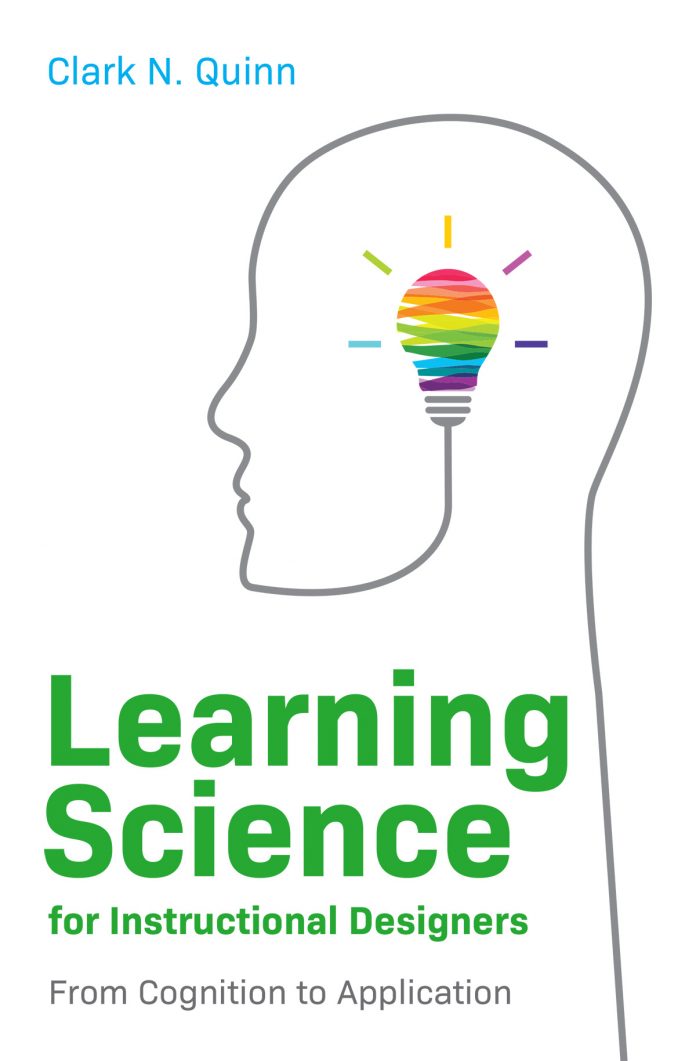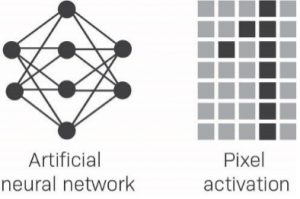
Some years ago, there was a spate of “brain training” apps released that were supposed to exercise your thinking skills. And, you’ll notice, they’ve largely disappeared. That’s because training on some things doesn’t transfer to other, dissimilar things.
We are quick to latch on to ideas that seem good. The important thing is to drop them when they prove to be ill-advised. Yet, in learning and development, certain ones continue to be marketing draws despite their lack of efficacy.
There’s been a current surge of approaches labeled “neuro learning” and “brain-based” learning (the latter of which is only slightly more helpful than “leg-based walking,” as a colleague suggests), occasionally accompanied by MRI images. New neurological results are coming out of the evolving capabilities of imaging, but the suggestion that they have implications for learning and instruction is, well, premature at best. On the other hand, we do have good scientific bases for what we should do.
Cognitive science has established some solid foundations and some new revelations. We can use them as a basis for important prescriptions, and then we can explore elements that add nuances. We need, however, to develop a solid foundation for understanding.
The most useful framework is to think about information passing from knowledge store to knowledge store via cognitive processes. All this is inferred on the basis of experiments, but it explains the data better than competing frameworks. Underpinning it all is a neural layer, but that’s not the best basis for the purposes of learning design.
From Neural to Useful
Our brains are massive networks of interconnected neurons. When we think, we activate parts of this network as patterns. And, when we learn, we essentially strengthen the connections between neurons. As the saying goes: “The neurons that fire together, wire together.” This makes the process of learning neural at its core. However, certain features of our cognitive architecture mean this is the wrong level of analysis.
It’s similar to the way an individual pixel on a screen isn’t the whole picture (Figure 2-1). Examining, or activating, one pixel won’t create the scene. It’s the relative activation of one with another across the whole screen that makes a picture. Similarly, the excitation of neurons in patterns is thought. A different set of patterns represents different concepts, and shared elements are activated together. Again, we strengthen relationships by triggering the patterns together. And we don’t address individual pixels; we provide input that gets processed on top of our existing knowledge to advance our understanding. You and I may store our representation of the word house differently, but the word itself will trigger each of our representations
Figure 2-1. Neural and Pixel Activations

There is some simplification in here, but the goal is to give you enough background to comprehend the decisions we’ll make about the importance of contexts, the role emotions play, and the gaps that require design process support. There are reasons to do things the way we’ll derive, and the more you understand why the better you’ll be able to adapt the recommendations to your own circumstances.
Note that accessing individual neurons is an incredibly invasive process. To address an entire concept, you’d have to have access to most of the neurons, with the ability to selectively activate them. At the neural level, that’d mean massive numbers of extremely fine wires connecting to each neuron. That, to me, would mean way too much messing about, with surgery in and around my existing connections. The risk of causing damage is high, and we don’t need to do it. There’s a far more effective way to activate neurons. Further, we don’t strengthen individual neurons alone. There’s no leadership neuron, for instance. Again, our thinking is represented by patterns of activity across mass numbers of neurons.
So, we activate these patterns through language and images. Concepts like leadership are represented by certain patterns of activation across our brains. Thus, while our brains are neural, we don’t design learning at this level. We typically work by activating concepts in contexts, and explicitly tying labeled things in the world together. This isn’t the neural level; it’s the cognitive level. It’s like how your car runs gas or electricity, but you don’t control those directly; you instead control the accelerator pedal and the brake.
In the end, you’ll continue to see a lot of “neural” branding in our field. And, sad to say, it’s largely hype. As I hopefully just made clear, neural is the wrong level. It’s trendy to ride the flash that accompanies the label, but it’s misleading. Yes, you’re strengthening neural-pattern connections, but you’re doing so at the cognitive level.



